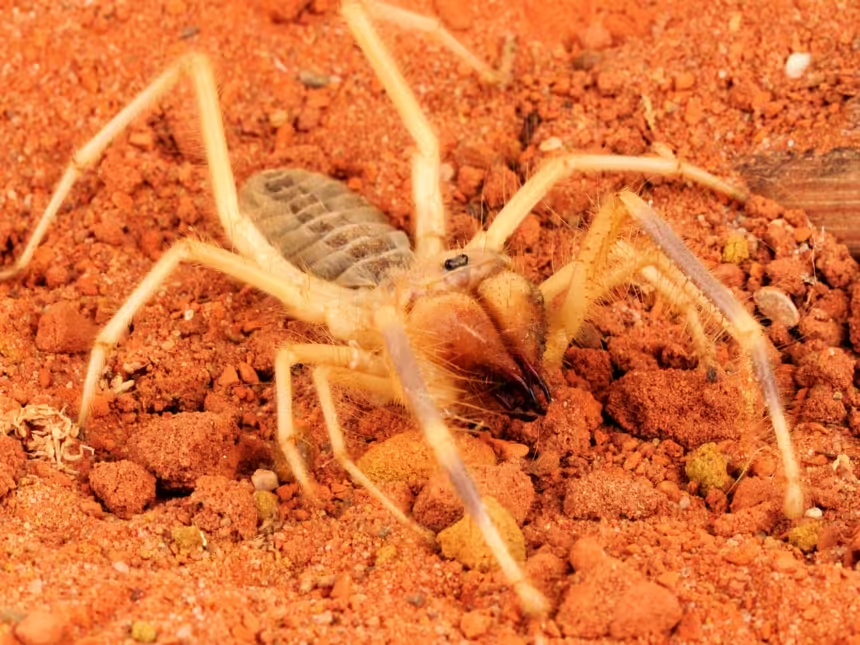Introduction to Camel Spiders
Camel spiders, often misunderstood creatures, belong to the arachnid family. With their unique appearance and intriguing behavior, camel spiders have sparked both curiosity and fear. In this article, we will delve deep into the world of camel spiders, exploring their biology, habitat, and the myths that surround them.
What Are Camel Spiders?
Camel spiders, scientifically known as Solifugae, are not true spiders but rather a separate order of arachnids. They are characterized by their large, hairy bodies, long legs, and distinctive chelicerae (jaws), which can be quite intimidating. Despite their name, camel spiders are not spiders; they are more closely related to scorpions and harvestmen.
Physical Characteristics of Camel Spiders
Camel spiders can vary significantly in size, with some species growing up to 6 inches in length. Their coloration often blends with their desert surroundings, providing effective camouflage. Their eight legs allow them to run at remarkable speeds, making them efficient predators.
- Body Structure: The body of a camel spider is divided into two main parts: the prosoma (the front part) and the opisthosoma (the rear part). This distinct segmentation helps in identification.
- Eyesight: Camel spiders possess multiple eyes, allowing them to detect movement quickly, which is crucial for hunting.
Habitat of Camel Spiders
Camel spiders primarily inhabit warm, arid environments, such as deserts and scrublands. They are often found in regions like the Middle East, North Africa, and parts of the southwestern United States.
- Burrowing: Camel spiders are adept burrowers. They create underground tunnels to escape the heat of the day and hunt for food.
- Climate Preferences: Their preference for hot climates makes them nocturnal hunters, emerging at night to avoid the scorching daytime temperatures.
The Behavior of Camel Spiders
Camel spiders are known for their predatory behavior. They are carnivorous and primarily feed on insects, small rodents, and other arachnids.
- Hunting Techniques: Utilizing their speed and agility, camel spiders ambush their prey. They can run at speeds of up to 10 miles per hour, making them formidable hunters.
- Mating Rituals: During mating season, male camel spiders engage in intricate courtship behaviors to attract females.
Myths and Misconceptions About Camel Spiders
Despite their fascinating biology, camel spiders have garnered a reputation steeped in myths.
- Myth #1: Camel spiders are venomous. Contrary to popular belief, camel spiders are not venomous to humans. Their bites can be painful, but they do not pose a significant health risk.
- Myth #2: Camel spiders can jump. While they are fast runners, camel spiders do not possess the ability to jump like other arachnids, such as jumping spiders.
Camel Spider Encounters
While encounters with camel spiders can be startling, they are generally not aggressive towards humans. They prefer to flee when threatened.
- What to Do If You Encounter a Camel Spider: If you come across a camel spider, it is best to observe from a distance. Do not provoke or attempt to handle them, as they may bite in self-defense.
Conclusion
Camel spiders are remarkable creatures that play an essential role in their ecosystems. Understanding their behavior and biology can help dispel the myths surrounding them. Whether you’re a nature enthusiast or simply curious about these fascinating arachnids, we hope this guide has provided valuable insights into the world of camel spiders.
FAQs About Camel Spiders
Q1: Are camel spiders dangerous?
A1: Camel spiders are not dangerous to humans. While their bites can be painful, they do not carry venom that poses a significant threat.
Q2: Where can I find camel spiders?
A2: Camel spiders are primarily found in arid environments, including deserts in the Middle East and parts of the southwestern United States.
Q3: What do camel spiders eat?
A3: Camel spiders are carnivorous and primarily feed on insects and small rodents.
Q4: Can camel spiders jump?
A4: No, camel spiders cannot jump. They are fast runners but do not possess the ability to jump like some other arachnids.
Q5: How can I avoid camel spider bites?








